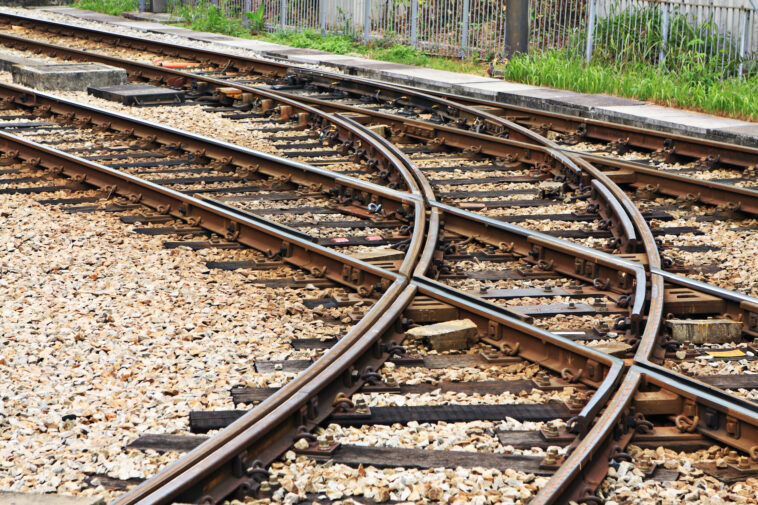[This story originally appeared on The North Coast Review, a blog based in Prince Rupert that contains “items of interest to those living on the North Coast of BC.”]
Canada’s Transportation Safety Board has released the report into its findings of a January 2020 derailment near the community of Kitwanga, listing a sudden track failure as the cause of the incident.

The January 7th derailment of the Prince Rupert-bound train left 34 cars carrying wood pellets derailed, with thankfully no injuries and no environmental impact reported from the incident.
The report examined a range of potential factors, from weather to train composition and inspection records of the CN line between Smithers and Prince Rupert.
Also included in the review was a note on recent derailments along the Bulkley Subdivision and the effects of bulk unit train traffic.
“Loaded high-capacity rail cars in unit trains pose special problems to the rails and wood track structure,” the report reads. “A loaded unit train is usually uniform, with all cars of the same design and loading. Therefore, each rail car on the train responds to track irregularities in the same manner as the previous car. This will typically concentrate the impacts in the irregularities in the track structure.”
The report went on, “Trains with numerous rail cars of the same design and with high load capacity provide the track little or no opportunity for elastic recovery during their passage. As a result, permanent, and usually non-uniform, track deformation is hastened by the accumulation of repeated stresses.”
The report concludes with a safety message which reviewed some of the factors and included a reminder of the need for increased inspection: “The video and audio recordings from the lead locomotive strongly suggest that a sudden track failure occurred.”
“Given the annual tonnage on the Bulkley Subdivision and the frequency of loaded unit train operations, it is likely that bulk unit train traffic accelerated the development and deterioration of priority wide-gauge conditions in the 6° LH curve where the derailment occurred,” the report explained. “Emerging wide-gauge conditions can progress quickly, particularly on track where bulk unit trains operate, making increased inspection and timely repairs a necessity for safe railway operations.”
You can review the full report here.




